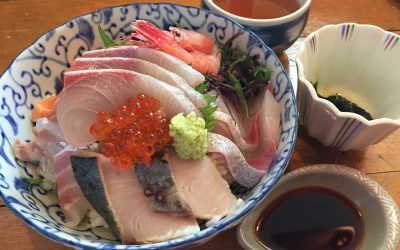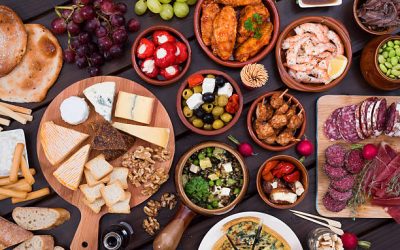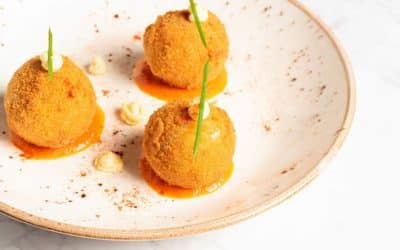Spain has been a meeting point for various civilizations, cultures including the ancient Greeks and Romans, Moors, and Jews. Each of these cultures has contributed culinary novelties to what took centuries to develop to what is now Spanish cuisine. Spain’s diverse landscapes and climates play a big role in its food. The coast features lots of fresh fish, while inside Spain, they have tasty meats and cheeses. Each place in Spain has its own specialty food and dishes.
The Flavors
Spanish cuisine is rich in flavors with each bite. From the earthy notes of saffron in paella to the smoky allure of paprika in chorizo, every dish tells a story of Spain’s rich culinary heritage. The flavor of Spanish dishes are derived from olive oil, saffron and paprika, ají (Ají is a spicy sauce that contains ají peppers, oil, tomatoes, cilantro (coriander), garlic, onions, and water), red pepper along with Garlic, tomato, and onion.
In essence, the Spanish cuisine uses most spices and ingredients typically found in the Mediterranean diet with it’s own particular twist.
The Tapas Culture
Spain is famous for its tapas—small, flavorful dishes that encourage communal dining and conversation. Anywhere from grilled octopus, creamy croquetas, to patatas bravas (crispy potatoes) topped with spicy tomato sauce. Spanish tapas are a variety of snack-sized foods that people enjoy together while socializing.
They come in many different kinds, including both hot and cold options.
Anywhere from grilled octopus, creamy croquetas, to patatas bravas (crispy potatoes) topped with spicy tomato sauce.Below are some examples of the different tapas one can expect. They’re tasty, fun, and perfect for trying many flavors in one meal.
- Cold Tapas
- Olives: Typically green or black olives, some variations are filled with garlic, red peppers or almonds.
- Cheese: Different types, sometimes served with quince jam.
- Ham: Thin slices of cured ham, like “jamon iberico.”
- Hot Tapas
- Tortilla Española: The Tortilla Espanola closely resembles and egg omelette combined with potatoes and sometimes onions. It’s typically cut into small wedges or squares.
- Croquettes: These are small, breaded, and fried balls filled with things like ham, chicken, or fish.
- Prawns: Often grilled with garlic and a bit of chili.
- Breads and Sandwiches
- Pan con Tomate: Bread with a mix of tomatoes, garlic, and olive oil on top.
- Bocadillos: Are small sandwiches filled with a variety of ingredients such as tuna, jamon.
- Meats and Sausages
- Chorizo: A spicy sausage, sometimes served in a red wine sauce.
- Albondigas: Meatballs in a tomato sauce.
- Veggies
- Pimientos de Padrón: Small green peppers, fried and sprinkled with salt. Some can be a little spicy!
- Patatas Bravas: Fried potato cubes with a spicy tomato sauce.
Paella and Rice Dishes
Paella, is most likely the jewel of Spanish cuisine, a vibrant dish cooked in a wide, shallow pan that bears its name. The scents of saffron-infused rice combined with seafood, meats, and vegetables come together to form a delightful sensory experience.
Seafood Galore
Spain’s long coastline makes it an ideal destination for seafood enthusiasts. Savor the freshness of gambas al ajillo (garlic shrimp) or a hearty bowl of seafood stew brimming with the treasures of the sea.
Charcuterie (Embutidos) and Cheeses (Quesos)
Spanish charcuterie includes delicious choices like smoky Iberian ham and spicy chorizo. Enjoy them with some special cheeses and a glass of wine for a wonderful treat.
Embutidos
Spanish charcuterie, also known as “embutidos” in Spain, is famous all over the world. Let’s look at a list of some popular Spanish charcuterie items and where they come from in Spain:
- Jamon Serrano – A cured ham found throughout Spain, but the name “Serrano” refers to the “sierras” or mountains where it’s often cured.
- Jamon Iberico – Produced mainly in the southwest of Spain, in regions like Extremadura, Andalusia, and Castilla y León. It comes from the Iberian pig, and its finest variety, “Jamon Iberico de Bellota”, is from pigs that eat primarily acorns.
- Chorizo – This spicy sausage is widespread in Spain. Different regions like Extremadura, La Rioja, and Asturias have their own variations.
- Salchichón – Another widespread sausage, similar to salami. Varieties can be found in many regions, but Catalonia and Ibiza have popular versions.
- Morcilla – This blood sausage has many regional variations. Morcilla de Burgos from Castilla y León contains rice, while Morcilla de Ronda from Andalusia often includes onion.
- Lomo – Cured pork loin, with Lomo Iberico being a top-quality version from the Iberian pig. Produced in regions similar to Jamon Iberico, like Extremadura and Andalusia.
- Cecina – Similar to beef jerky, but more luxurious. Cecina de León from the Castilla y León region is particularly renowned.
- Botifarra – A type of sausage from Catalonia. There are many variations, including black (with blood) and white (without).
- Sobrasada – A spreadable sausage from the Balearic Islands, particularly Mallorca. It’s made with pork, paprika, and other spices.
- Fuet – A thin, dry sausage from Catalonia. It’s similar to salchichón but thinner and often has a white mold on the casing.
- Longaniza – A sausage that looks like chorizo but has different flavorings. Versions are found throughout Spain, with Aragón and Valencia offering notable varieties.
- Chistorra – A fast-cure sausage with a high fat content and paprika. It’s especially popular in Navarra and the Basque Country.
These are just some examples of the rich and diverse Spanish embutidos (charcuterie). Each region often brings its own twist, showcasing the varied and delicious landscape of Spanish cured meats.
Quesos (Cheeses)
Here are some prominent Spanish cheeses and their originating regions:
- Manchego – From the La Mancha region. It’s perhaps the most famous Spanish cheese, made from sheep’s milk.
- Cabrales – From Asturias. This is a strong blue cheese often aged in mountain caves.
- Mahón – From the island of Menorca in the Balearic Islands. It’s a cow’s milk cheese, ranging from soft to hard, depending on its age.
- Tetilla – From Galicia. This cheese has a soft texture and is made from cow’s milk. Its name means “small breast,” inspired by its shape.
- Zamorano – From Zamora in the region of Castilla y León. It’s a sheep’s milk cheese with a crumbly texture.
- Idiazábal – From the Basque Country and Navarra. Made from sheep’s milk, it can be smoked or unsmoked.
- Roncal – From the Navarra region. Another sheep’s milk cheese, it has a firm texture.
- Ibores – From Extremadura. A goat’s milk cheese often rubbed with paprika or olive oil.
- Murcia al Vino – From Murcia. This is a goat’s milk cheese washed with red wine, giving it a characteristic color.
- Payoyo – From the Villaluenga del Rosario area in Andalusia. It can be made from sheep’s or goat’s milk.
- San Simón – From Galicia. A smoked cow’s milk cheese with a distinctive teardrop shape.
- Torta del Casar – From Extremadura. Made from sheep’s milk, it has a very soft and creamy interior.
- Valdeón – From Castilla y León. A blue cheese made from a mix of cow’s and goat’s milk, and sometimes sheep’s milk. It’s wrapped in maple leaves.
Churros and Chocolate
Spanish sweets are heavenly. Churros and chocolate is a popular treat in Spain. Churros are like long, skinny doughnuts that are crispy on the outside and soft inside. They’re often sprinkled with sugar. The chocolate is a thick, warm drink that’s perfect for dipping the churros into. It’s like having doughnut sticks with a chocolate dip!
Sangria and Spanish Wines
Sip on sangria, a fruity and refreshing Spanish cocktail, or explore the world of Spanish wines, from the robust Riojas to the sparkling Cavas. Sangria traditionally starts with a base of red wine although white wine can also be used.
Fruit juices or actual fruits such as oranges, lemons, and peaches, along with soda water, sparkling mineral water, and sometimes brandy are also added to the mix. The possibilities for customization are nearly limitless. It’s usually served in a large pitcher, topped off with ice.
Popular Spanish Dishes
Here are some of the most common and iconic dishes you’ll find throughout the country.
- Paella A traditional Valencian dish that has become synonymous with Spanish cuisine. It’s a rice-based dish cooked with saffron and typically includes a variety of ingredients such as chicken, rabbit, seafood, and vegetables. There are different regional variations, but seafood paella and Valencian paella are some of the most popular.
- Tapas While not a single dish, tapas are small appetizers or snacks that are often served alongside drinks in bars and restaurants. They can include a wide range of items like olives, cured meats, cheeses, seafood, croquettes, and more.
- Gazpacho A refreshing cold soup made from tomatoes, peppers, cucumbers, onions, garlic, olive oil, and vinegar. It’s a perfect dish for hot summer days and is often enjoyed as a starter.
- Tortilla Española A classic Spanish omelette made with eggs, potatoes, and sometimes onions. It’s a hearty and comforting dish that’s commonly served as a tapa or a light meal.
- Jamón ibérico This is a type of cured ham made from acorn-fed Iberian pigs. It’s known for its rich flavor and tender texture and is often sliced thinly and enjoyed on its own or as part of various dishes.
- Pulpo a la Gallega Also known as Galician-style octopus, this dish features tender octopus that’s been boiled and then drizzled with olive oil, sprinkled with paprika, and served on a bed of sliced potatoes.
- Patatas Bravas Crispy fried potatoes served with a spicy tomato sauce and often a garlic aioli. It’s a popular tapa that’s both flavorful and comforting.
- Churros con Chocolate Fried dough pastries that are crispy on the outside and soft on the inside. They are often enjoyed for breakfast or as a dessert, dipped in thick hot chocolate.
- Fabada Asturiana A hearty bean stew from the region of Asturias, typically made with white beans, sausages, pork, and sometimes morcilla (blood sausage). It’s a warming and filling dish, especially in colder months.
- Crema Catalana A dessert similar to crème brûlée, it consists of a creamy custard base topped with a layer of caramelized sugar. It’s flavored with lemon and cinnamon and is a popular dessert in Catalonia.
- Salmorejo Similar to gazpacho, this cold soup hails from Andalusia. It’s made with tomatoes, bread, olive oil, garlic, and vinegar, resulting in a thick and flavorful dish that’s often garnished with hard-boiled eggs and jamón.
Cookware Essentials
These are the most commonly used Cookware for authentic Spanish cuisine.
Paella Pan (Paellera) This wide, shallow pan is designed for making paella. Its even heat distribution allows for the perfect socarrat—the crispy layer of rice at the bottom.
Terracotta Dishes Used for dishes like tapas and cazuelas (slow-cooked stews), terracotta dishes retain and enhance the flavors of Spanish cuisine.
Churro Maker Create perfectly shaped churros with a churro maker for an authentic taste of Spain.
Clay Pot (Cazuela) These traditional clay pots are ideal for slow-cooked dishes, preserving the essence of flavors.
Jamón Carving Set To indulge in the world of Spanish ham, a jamón carving set is essential.
Wine Glasses Spanish wines deserve elegant wine glasses to showcase their rich flavors.
Tapas Serving Dishes Serve tapas in style with an array of vibrant and varied serving dishes.
Conclusion
These dishes provide just a glimpse into the rich tapestry of Spanish cuisine. Remember that Spain’s culinary offerings are heavily influenced by its diverse regions, each with its own unique specialties and ingredients.
Spanish cuisine is more than food; it’s a celebration of life, culture, and the joys of sharing. It’s a feast for the senses that invites you to explore the diverse landscapes and flavors of Spain, from the bustling markets of Barcelona to the serene vineyards of Rioja. With the right cookware, you can embark on a culinary adventure that will make your taste buds dance with joy. ¡Buen provecho! (Enjoy your meal!)










0 Comments